Smart Plug Showdown
Intro
I’ve recently started using smart plugs throughout the home - initially stemming from the fact that I bought a TP-Link HS110 because I wanted to measure the charging rate and total capacity of my new plug-in hybrid. However, after using it for a while, I found I was using it more and more elsewhere within the house (or knew of locations I could use it) so I bought myself a few of the cheaper models (HS100 - the same plug but with no power monitoring).
The use of these peaked when we got an Amazon Echo Dot when we upgraded our central heating with the Hive smart thermostat. With the Echo, it makes turning these switches on and off remarkably easy (when Alexa understands what you’re saying!)
Anyhow, after a while, whilst the TP-Link plugs generally worked, the power meter on the one I use for the car charger seemed to be playing up, so I decided that I’d get one of the Elgato ones I had been trying to decide whether to get it when I purchased the initial plug. These were more expensive than the TP-Link ones and only work with Siri and Apple’s Homekit - so no getting these ones to work via voice activation with Alexa.
So after using them both for a bit, I thought I would write a review.
Ease of Setup
Both plus require setup when you purchase them to get them on your network. This is where Apple’s “influence” is apparent with the Elgato Eve plugs. Setup was as simple as opening the Eve app on iOS (or Apple’s Homekit app) and then scanning the code on the side of the plug and that’s it - all setup and ready to rock. However, this is perhaps down to the fundamental difference between the two plugs - the Elgato ones connect via Bluetooth and the TP-Link ones use WiFi (the 2.4GHz band, so you’re out of luck if you run a 5GHz only WiFi setup). Apparently, this is supposed to prevent interfering with your network and browsing speeds whilst on the internet, however, I’ll discuss that a bit more in a bit.
The TP-Link plugs require you to connect them to the internet via the WiFi. To do so on iOS requires that you plug the TP-Link plug in, wait for it to boot up, connect to the plugs own internal WiFi that it generates as a new plug, set the plug up via the Kasa app which consists of entering your own WiFi details and then switching back to the local WiFi to control it. Whilst it’s reasonably simple, it is more of a hassle than the Elgato.
The TP-Link one during the setup, let’s you create an account. Initially I didn’t create the account and was only able to control my items whilst I was on the same WiFi account which wasn’t the best. However, once I gave in and created an account, I was able to control the plugs from anywhere and have been able to control them with the Echo.
So overall, the Elgato ones are the easiest to get setup.
Ease of Use
The setup of the Elgato plug shows that the setup of the Eve plugs was the easiest. However, in general use, these are actually more of a hindrance to use than then TP-Link ones.
One of the reasons for having the smart plugs (for me), was the fact that I could use remotely control them and could set timers for the individual plugs or a schedule. For this, the TP-Link ones are much easier to setup.
The image below shows the default page when you open the app - the schedule button is clearly shown at the base of the image.

Once you click it, you can setup a schedule like below. Sunrise and Sunset are based on the device location, which can be set by the app. Having used this setting for the Christmas lights, this appears to be pretty accurate.

The Elgato plugs however? These are buried deep within the settings. For whatever reason, Apple and Elgato have put this under the Scenes section and it’s called a timer. In terms of creating a repeating schedule, you have far less control over the timer without creating more than one for each device that you want to use. This can be, as you might imagine, a pain.
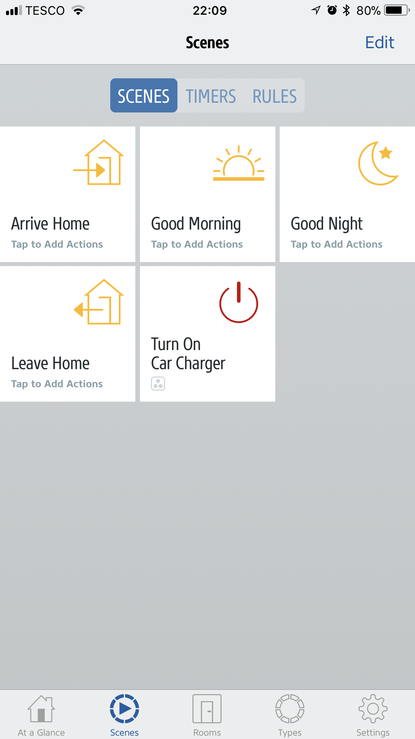
I think the features for the Elgato plugs and Homekit rely more on location services than actual timers. For example, it’s really simple to create events that occur when you arrive or when you leave a geofenced area (like your house). This is something that I’ve not noticed on the TP-Link one - I believe you have to buy the TP-Link hub to get this functionality. However, it’s not something I’ve been majorly fussed about.
Features
The Elgato one allows you to create locations for the devices - assuming that you will fill the house with items. Admittedly, at this point in time, Elgato have more smart home products than TP-Link, so this is probably a handy tool to have if you do have a device in every room. For me, it just makes it easier not to turn off the computer switch by accident.
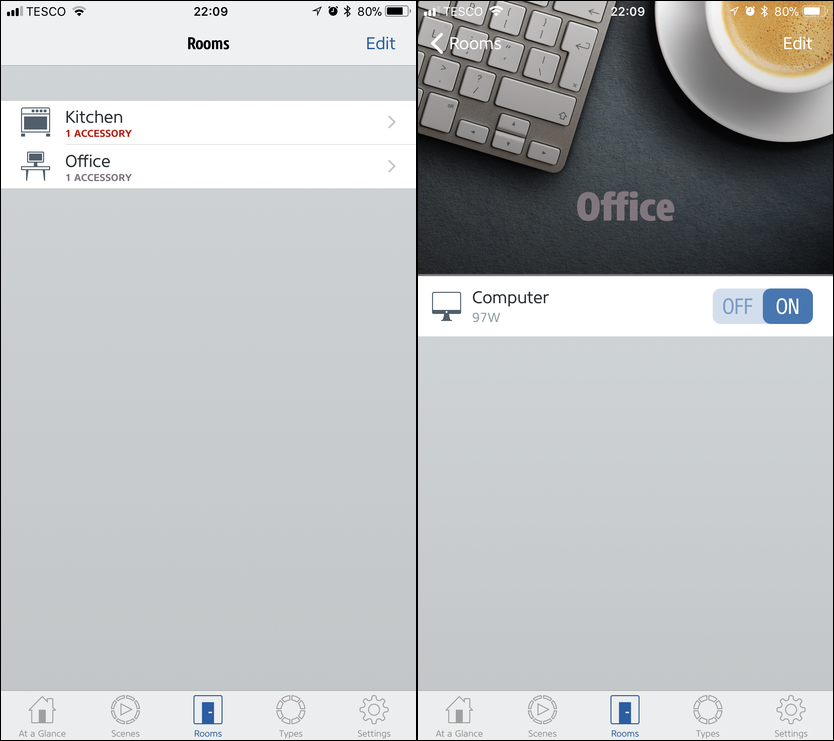
The Elgato plugs, by default, contain a power meter. The TP-Link plugs do not have a power meter, unless you pay extra for the privilege (the HS110, rather than HS100). Here the Elgato plugs really shine in comparison.
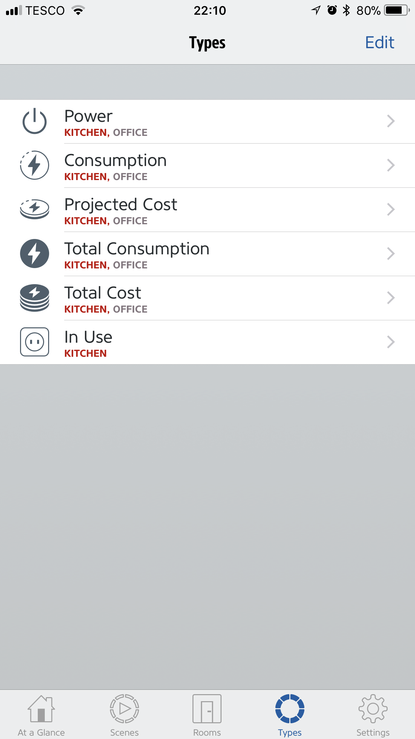
You are able to input the cost of your electric in cost per kWh and the plug is then able to give you a total cost and estimated cost for the year.
Drilling down in to the total consumption graphs gives details on how often the plug is being used and what the power draw through the plug is. You can download the data in a CSV format which is interesting and it allows you to reset the data at any point you want. Ideal for my use case of charging the car, where I want it reset to 0 every time I start a new charge (though with the benefit of the stored data, this is less of an issue).
It should be noted that the plugs only record the data for every 10 minutes.
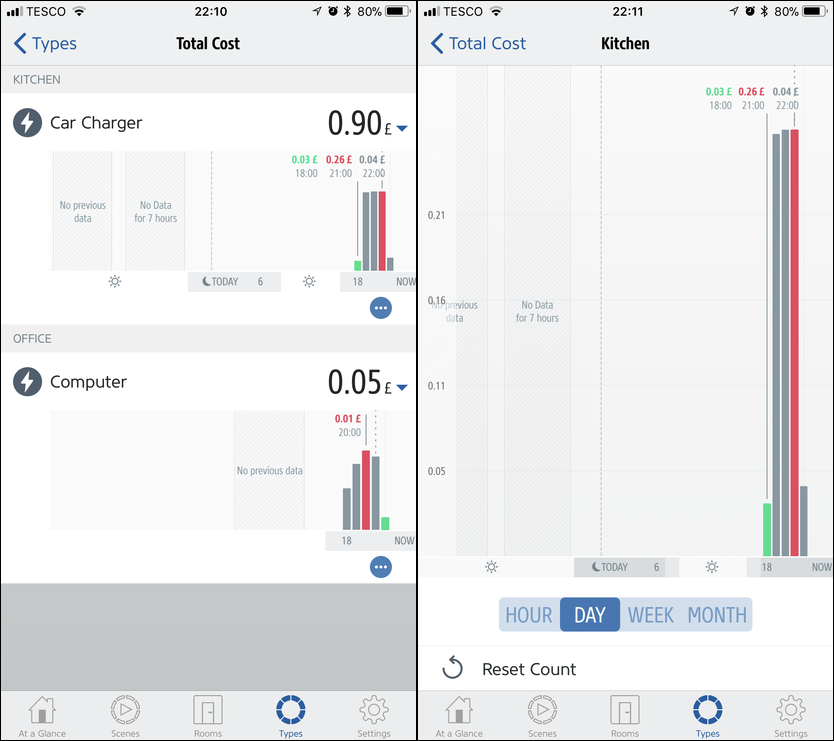
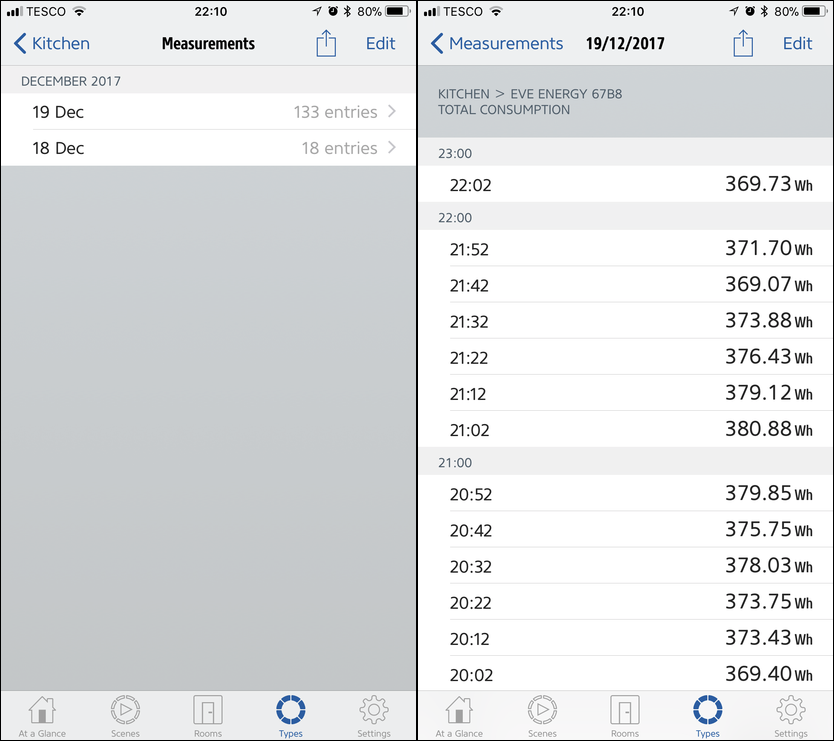
Compare this to the TP-Link device which only gives the following screen.
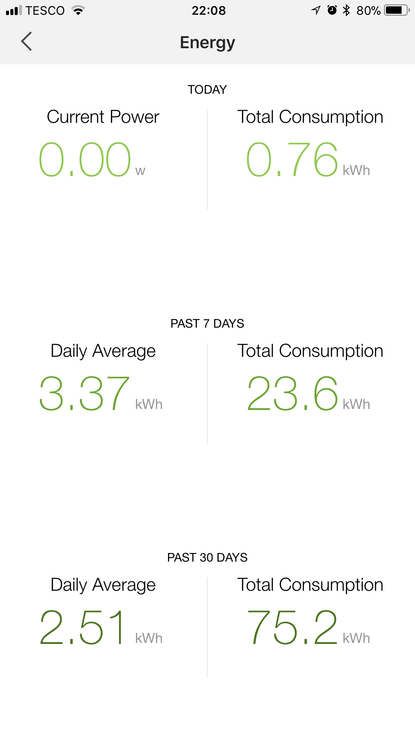
Comparing the two screens, you can get the highlights on all the Elgato plugs in a single screen, where as you can only view an individual TP-Link plug at once.
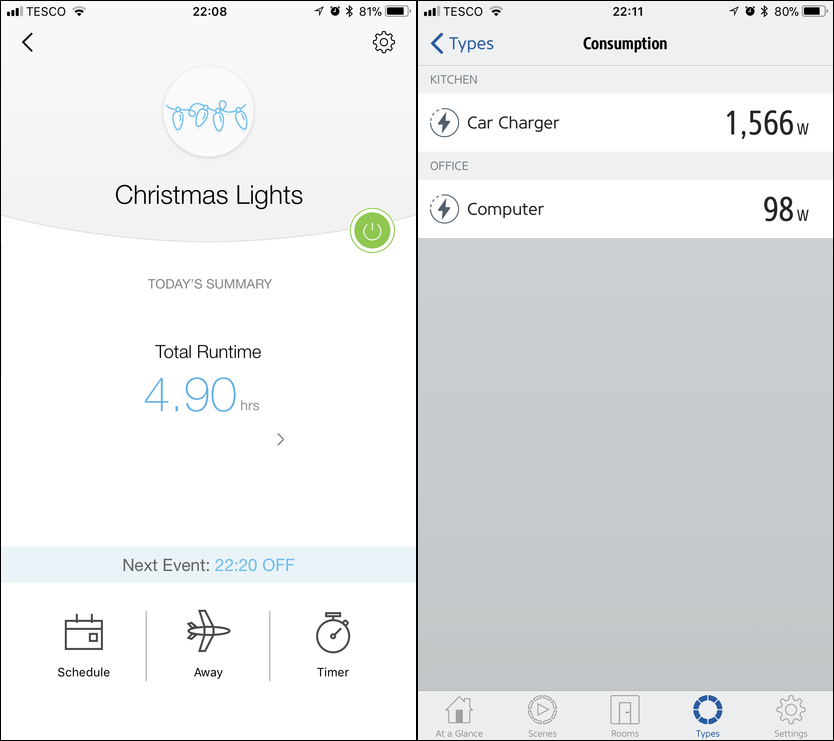
Hardly any comparison! The TP-Link plug also resets the daily consumption figure at midnight (as you might expect for a daily summary) and therefore if I was using it to charge my car up overnight, if it had turned on before midnight, I’d lose the total charge that the car took, unless I remembered what the weekly summary said and was able to calculate it. This led me to setting the charger to activate after midnight, which, in fairness wasn’t to much of an issue.
One of the perks of the TP-Link devices are remote access. These can be adjusted outside of the house, meaning you can always check and see if you’ve left something on when you’ve left the house and if needed, turn it off or on. The Homekit devices are supposed to be able to do this if you have an Apple TV but I’ve found this to be pretty poor and I’ve not yet had it work.
The TP-Link has a feature called away - this will switch the device on and off to replicate someone being in the house and using the device. It does this at random, though perhaps this isn’t the best idea - I mean, once things get dark outside, the lights would tend to remain on in the room being used. Setting this up with a timer would perhaps be a better idea.
Compatibility
Neither of the two devices are compatible with each other, so I’m stuck using two different apps to control each one. However, this isn’t really to much of an issue. The biggest issue is that the Elgato devices are Homekit devices and therefore only controllable using an iOS device. Not much use for someone that seems to switch between Android and iOS regularly!
As they also connect using Bluetooth, the range is significantly less - I can’t for example, look at the Computer plug whilst I’m in the bedroom. Using the Apple TV as a home hub is supposed to negate this, but it doesn’t work, so in effect, I can’t view half of the plugs whilst I’m the other side of the house. And this is a standard 3 bed semi.
In terms of third party compatibility, Elgato works with Siri and TP-Link works with Alexa. I’ve found Alexa to be far better than Siri and therefore, voice activation of the TP-Link devices is much better than Siri.
Cost
The Elgato devices are almost double the cost of the TP-Link devices. Are they worth it? I don’t think so.
If you’re desperate for a power meter on every plug and to still have the smart functionality, then the Elgato ones aren’t bad. If you’re a stats hungry person, they’ll beat the TP-Link one hands down.
However, if you’re not to fussed about the cost, you can get the TP-Link ones for about £20 in comparison to £45. That way, you can equip twice as many plugs with them.
Points to note however, is that the TP-Link ones rely on the TP-Link service. If this goes down in the future, you’ll only be able to connect to the plugs locally on your network. The Elgato ones technically rely on the Apple Homekit, and should in theory, last as long as Apple supports it, but as I can’t get it working myself currently, it perhaps isn’t to much of an issue!
Conclusions
Overall, I’d probably side with the cheaper option for my use cases. The Elgato one is better for me for the car charger. However, in this instance it’s purely for recording the amount of energy used to charge the car I’m interested in, less so of the remote control ability.
The TP-Link plugs however steal the show from the Elgato plugs in my view. In this case, cheaper is better. I’ve found that the range is significantly better (as I can get wifi all around the house, I’m not stuck for being out of range), the timer functionality is so much simpler to use and and they’re significantly cheaper. I’ve seen none of the slow down on my wifi network that Elgato say that would be caused by having the plugs on the network - perhaps they’re referring to a whole house full of plugs, rather than the 3 that I currently have. Yes, the power tracking isn’t as good, but for simple remote switching on and off, they’re ideal.
Overall, both are perform pretty well and do the function they are supposed to - it’s just that the TP-Link one is far simpler to do it. If I was to get more, I’d go for the TP-Link ones again (though I’m eying up their bulbs next for some lamp purchases!)